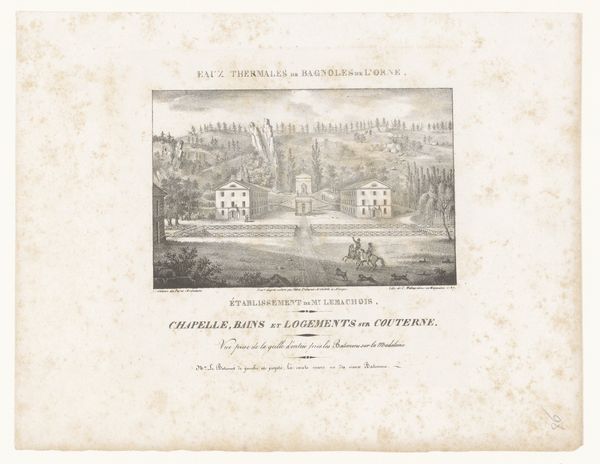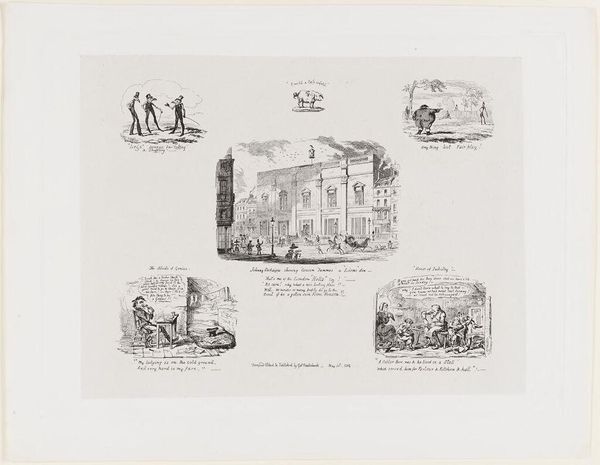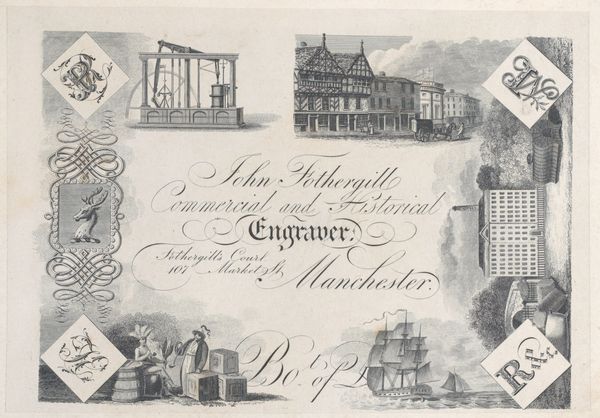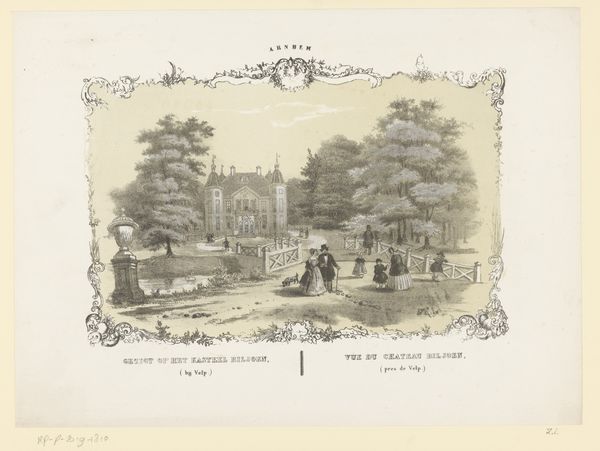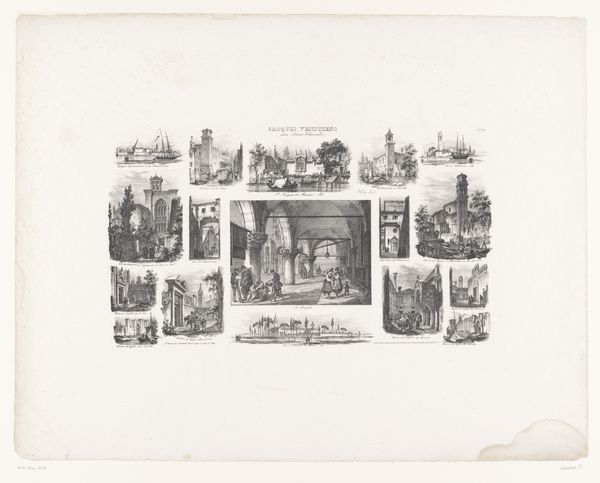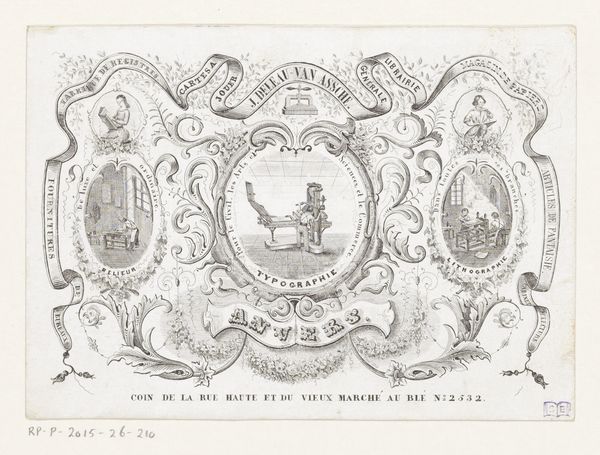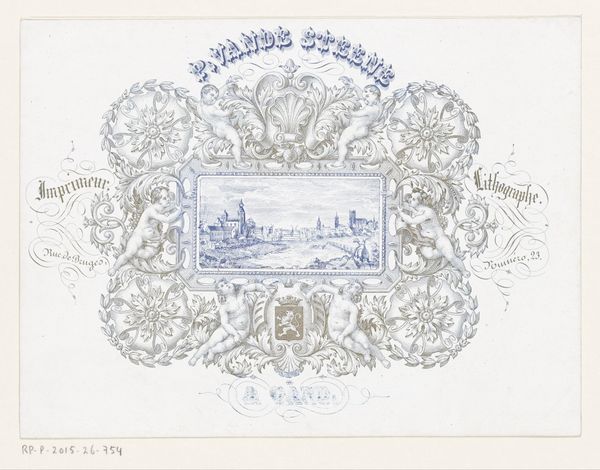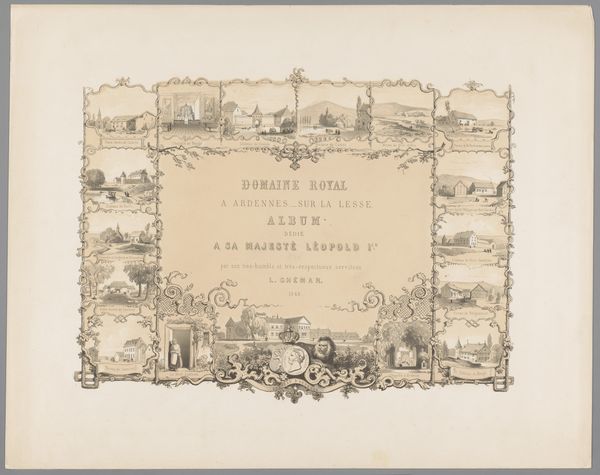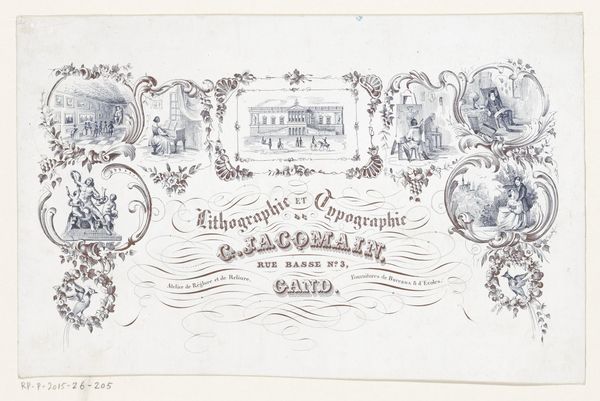
Dimensions: height 90 mm, width 128 mm
Copyright: Rijks Museum: Open Domain
Editor: This is "Visitekaartje van lithograaf Ed. Nacher te Brussel", made sometime between 1840 and 1875 by Ed. Nacher. It's a lithograph, and it really strikes me as a beautiful example of romantic cityscape. What do you see in it? Curator: As a materialist, I'm drawn to consider lithography itself. Look at the way this print makes a direct advertisement for its means of production. The "how" and "who" is intrinsic to the artwork. Editor: So, the card is advertising the skill of the craftsman in lithography. Curator: Exactly! The card is selling the promise of quality printed materials to bourgeois consumers and potential business clients. Note the artist has chosen buildings with signs of affluence, implying wealth. Consider how lithography democratized image production relative to, say, etching. The work creates an economy of images. Editor: Ah, I see! It’s not just a pretty picture but an advertisement highlighting access to a new kind of craft production and material culture. Does the depicted landscape also contribute to the card's economic function? Curator: Absolutely, the cityscapes represent what Nacher can capture for his clients—buildings, landscapes, a certain je ne sais quoi. Consider the shift this period enabled between aristocratic patronage towards production of commercial imagery. The card presents this possibility through materiality, as Nacher directly links his skill to representing place, wealth and progress. Editor: That's fascinating! I never would have considered how the production method influenced the card's very purpose. Curator: Looking at the materiality encourages these considerations. I wonder how the means of producing images changed society’s expectations of representation and what those effects did to conceptions of place itself. Editor: I'll definitely be paying more attention to how art is made and the economy that surrounds the process from now on!
Comments
No comments
Be the first to comment and join the conversation on the ultimate creative platform.

